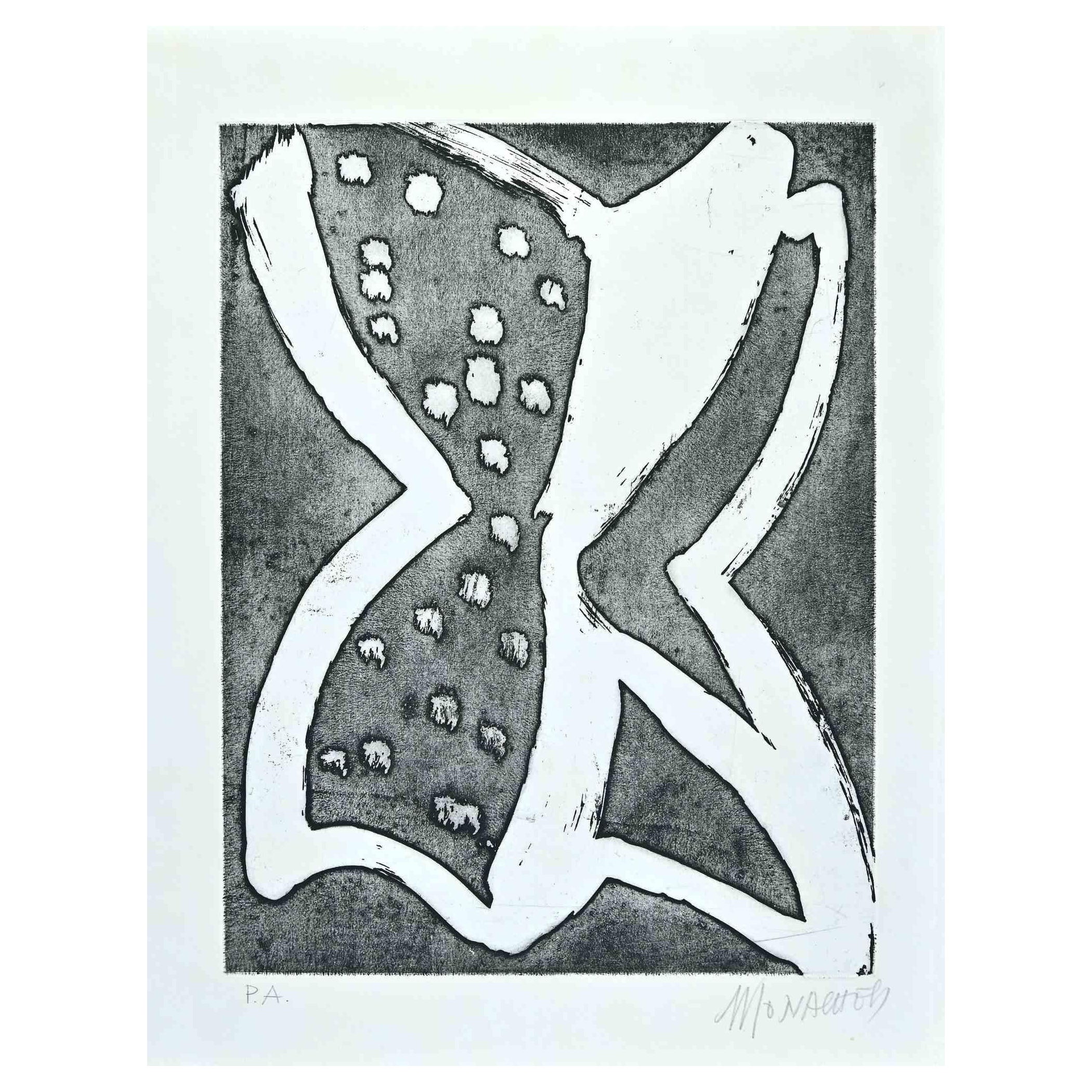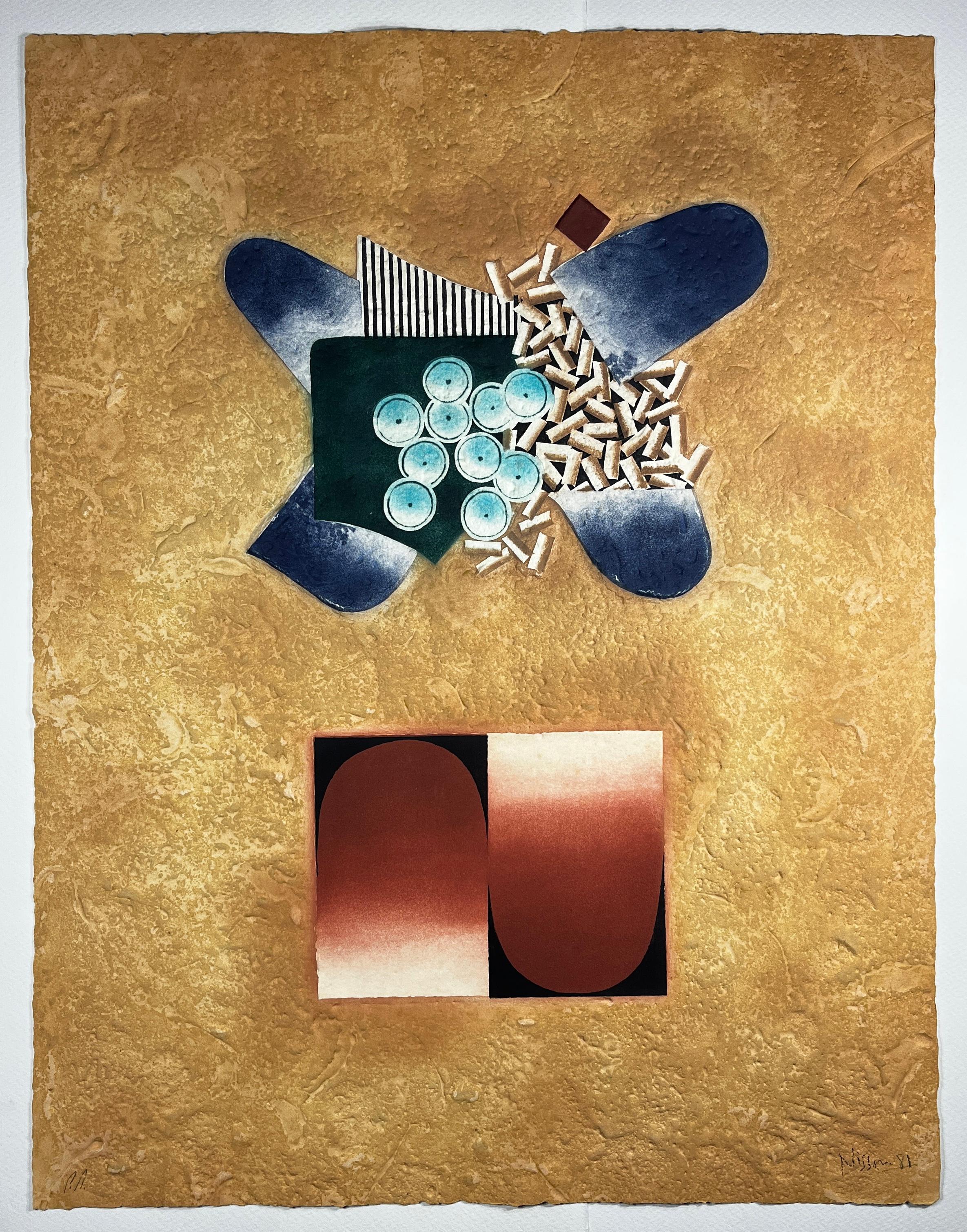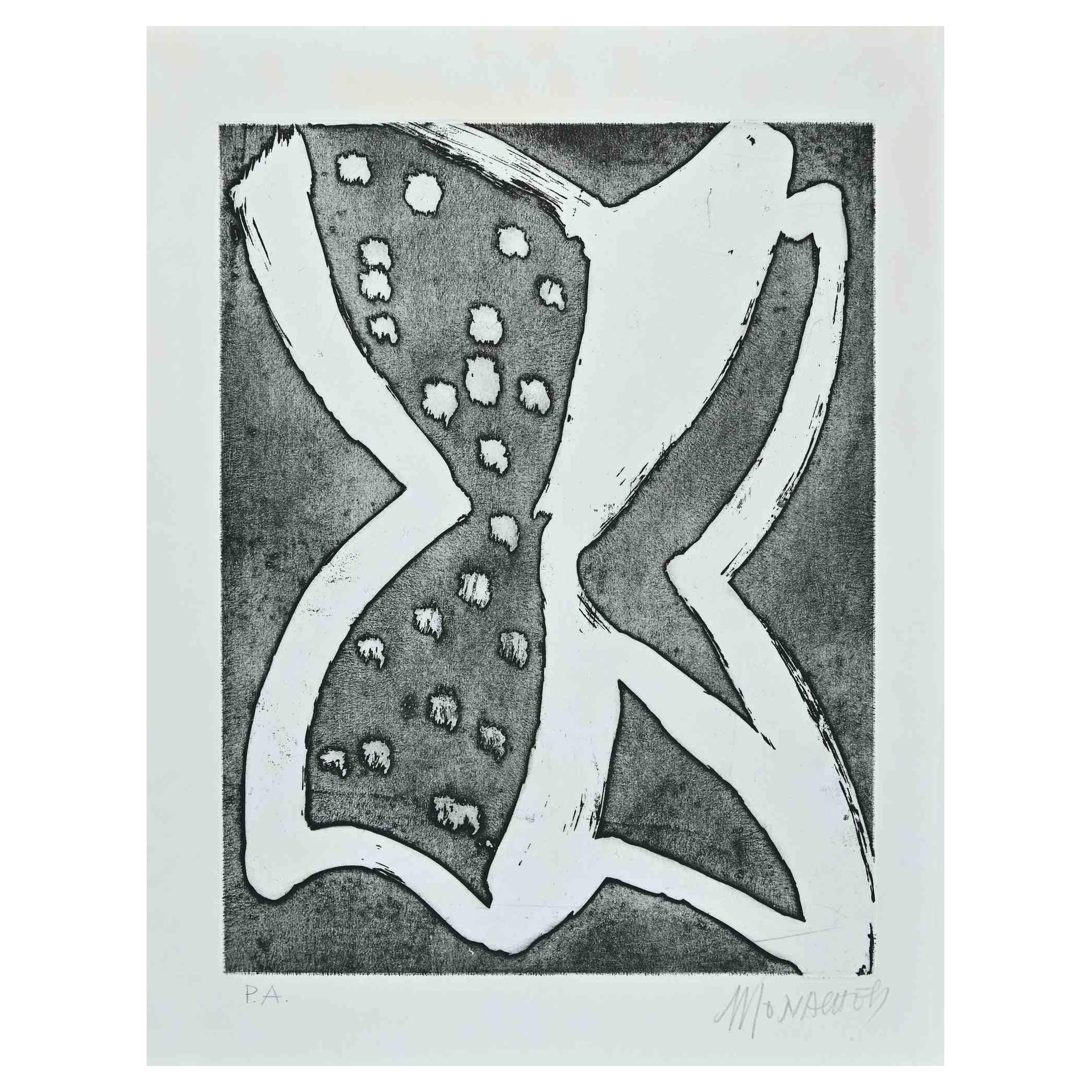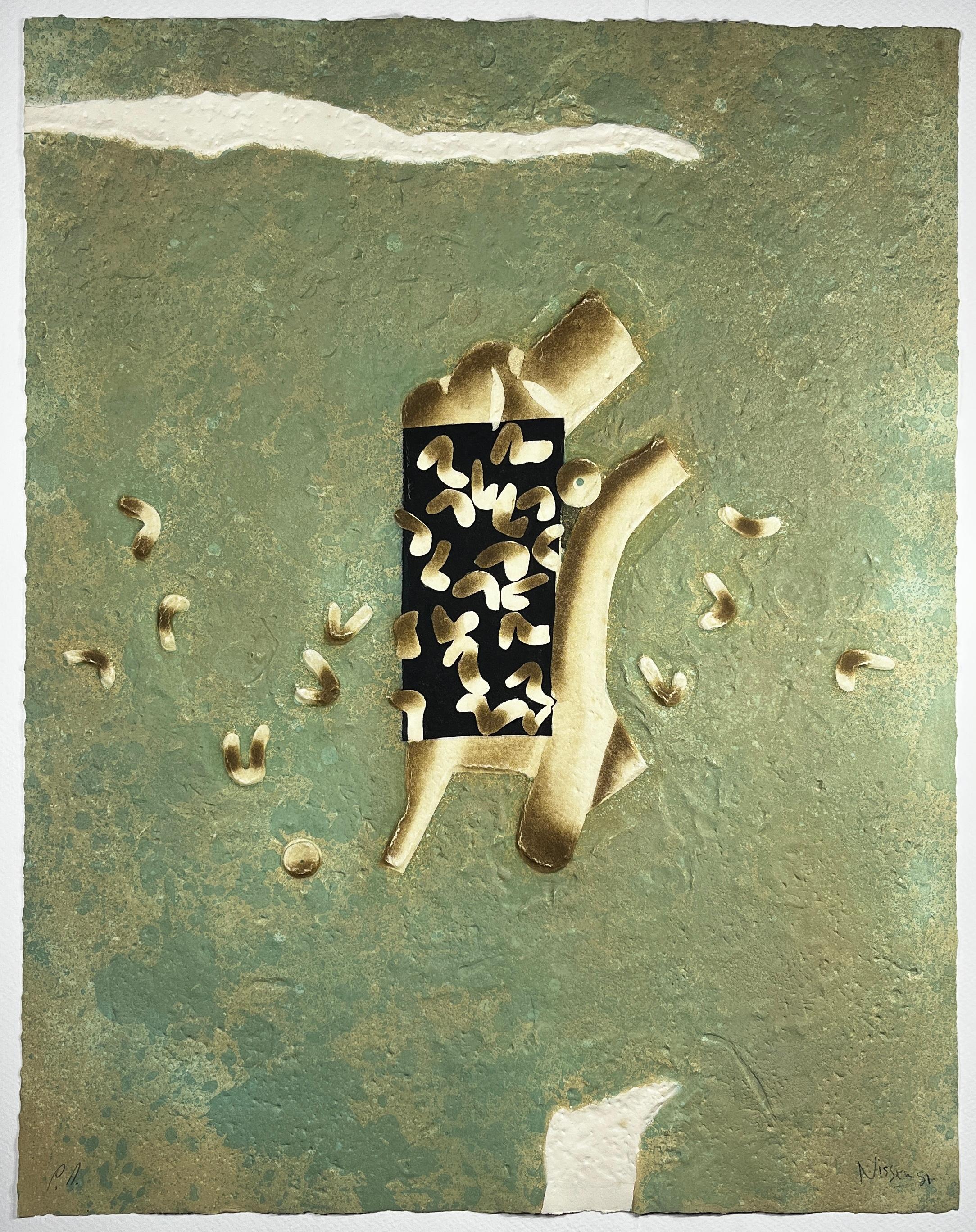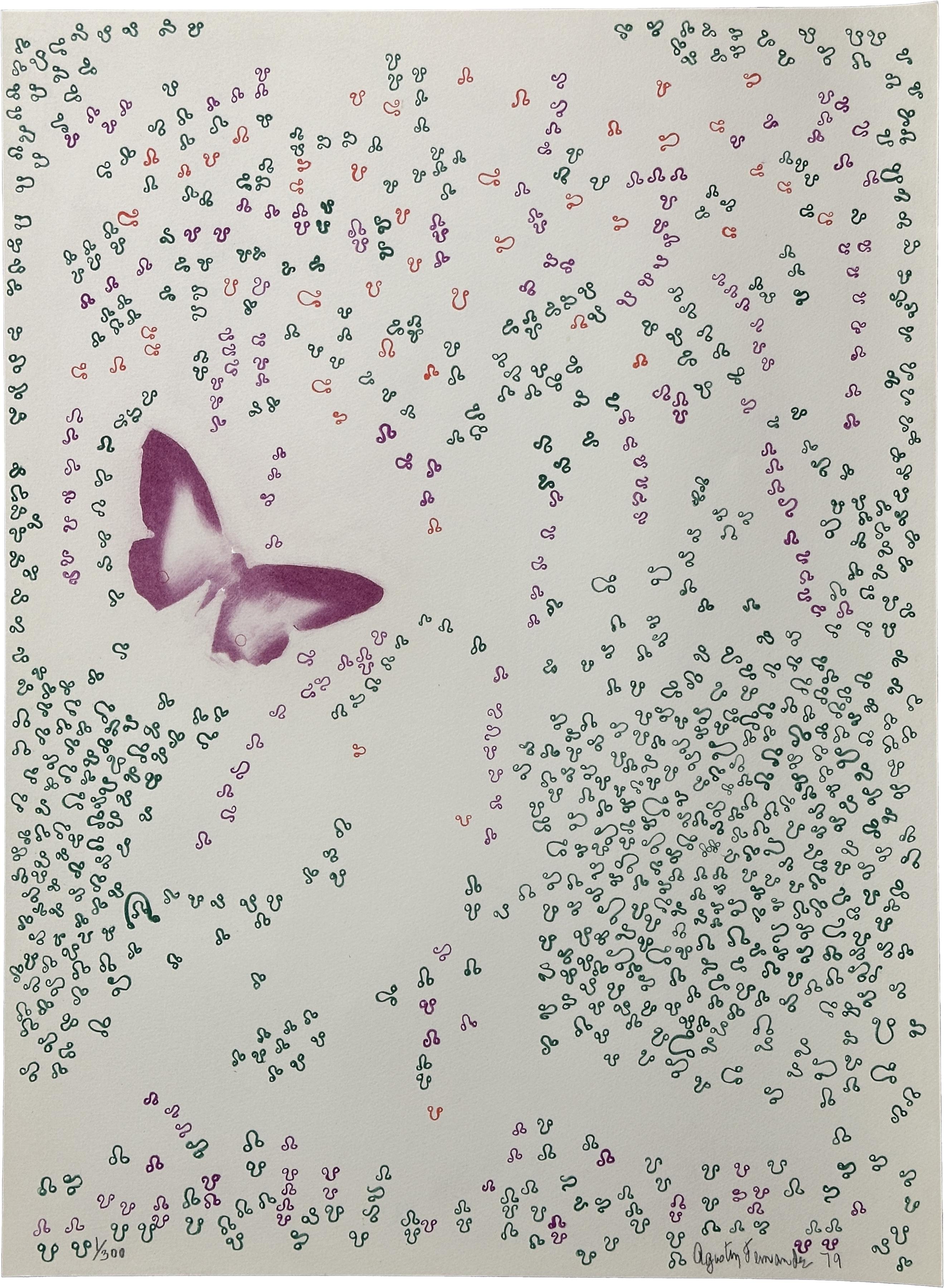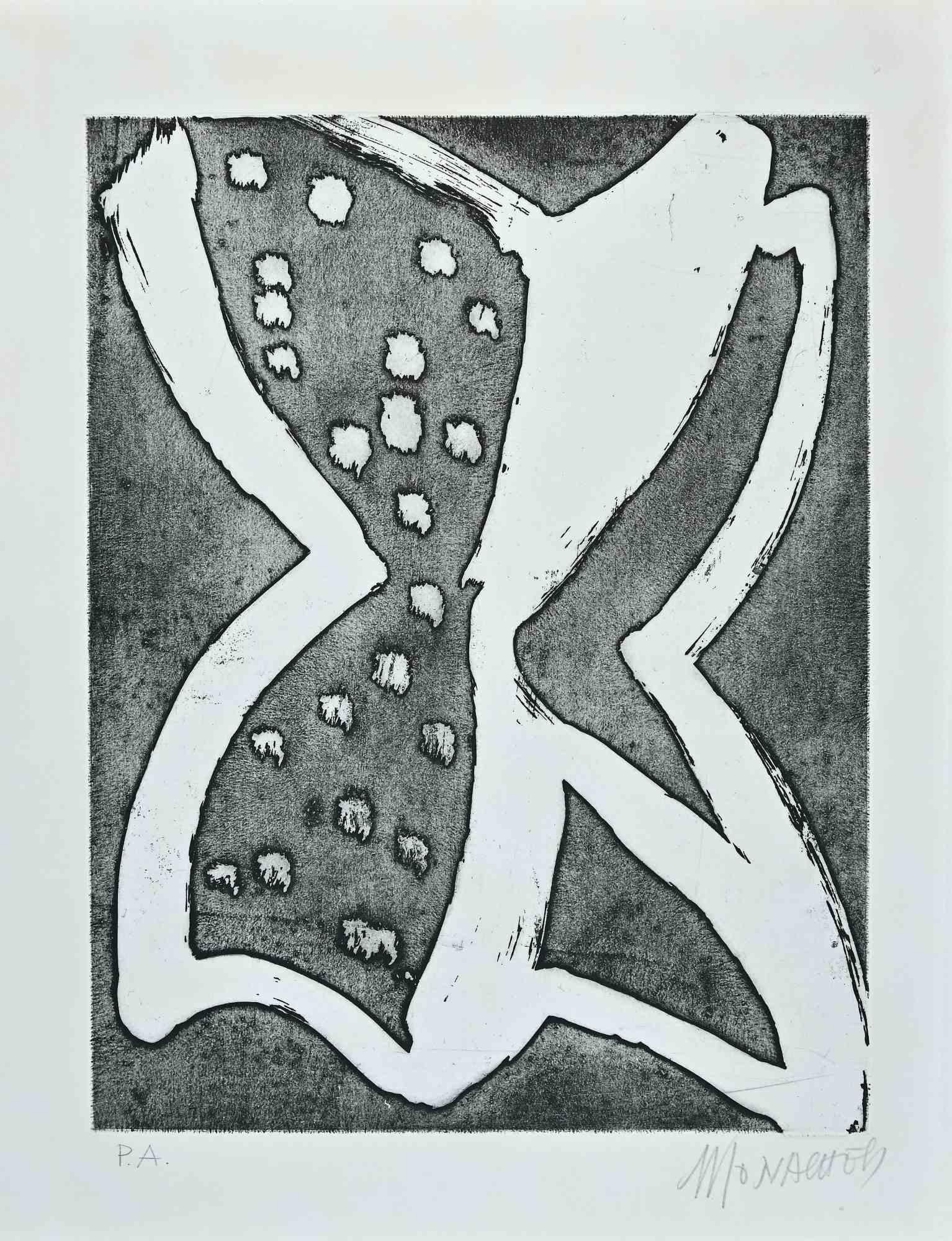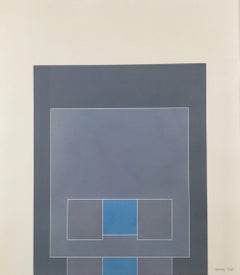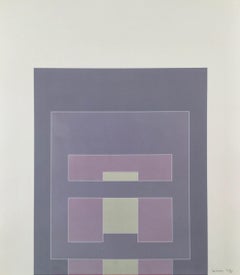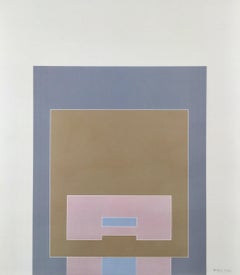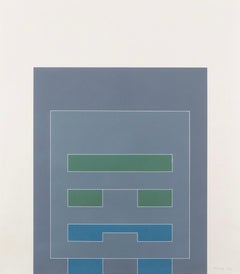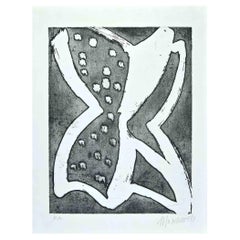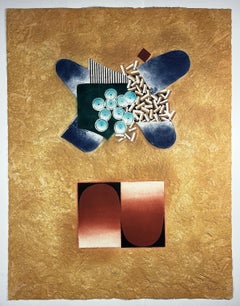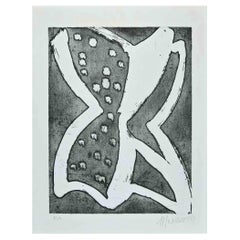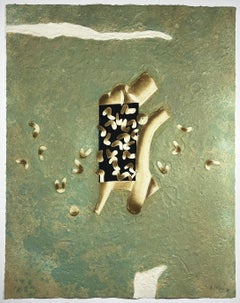Items Similar to Mariposa Nocturna by Alan Reynolds, 1967
Want more images or videos?
Request additional images or videos from the seller
1 of 6
Alan ReynoldsMariposa Nocturna by Alan Reynolds, 19671967
1967
$2,250.68
£1,650
€1,916.53
CA$3,100.87
A$3,381.93
CHF 1,791.52
MX$40,544.60
NOK 22,816.01
SEK 20,863.55
DKK 14,318.36
About the Item
Mariposa Nocturna by Alan Reynolds, 1967
Additional information:
Medium: etching and aquatint
57 x 45 cm
22 1/2 x 17 3/4 in
signed, dated, numbered and inscribed "John from Alan" in pencil
In March 1952, the unknown art student Alan Reynolds exhibited thirty-four paintings at the Redfern Gallery. A decade and nine one-man exhibitions later, his work was represented in thirty important museum collections, twelve of them overseas. He was the most significant English painter to emerge in the early 1950s.
By the mid 1950s, Reynolds was fêted by critics, sought after by collectors, both traditional and modern; and he was heralded as the saviour of English landscape painting. But from the first exhibited works to his minimalist abstractions of today there is a consistent concern for formal and structural elements of composition. From the outset, he revered the art and writing of Paul Klee; and he was later indebted to Mondrian, whose transformations of trees and branches into vertical and horizontal notations were shown at the Whitechapel Art Gallery in 1955. He also studied traditional Chinese landscape painting, and his highly praised botanical studies - ears of corn, teazles and grasses - possess an exquisite calligraphic subtlety.
Certainly, as J. P. Hodin noted, Reynolds' art of 1952 displayed:
a genuine loving attachment to nature, both to landscape as a whole and to its particular shapes and arrangements, to blossoms and fruit, to grasses and weeds, to leaves and buds, to branches and twigs . . . his preoccupation was not with the grand or with the picturesque, it was not with the topographical . . . rather a penetration into the spirit of nature
Beyond mere representation, Reynolds (akin to Cézanne) imposed a strict visual order onto each specific view: the essence of the Kentish orchards, hop gardens, fields and barns was presented in formal and geometric terms - balanced triangles, circles, semi-circles, rectangles, fanshaped trees.
In 1953, Reynolds saw his painting as:
a problem of solving equations; tonal, linear and so on. The subject or motif must be transformed and become an organic whole. Poetry is never absent from Nature, but alone it cannot constitute a work of art. It must be reconciled with the elements of design and composition. Laying emphasis on the formal values in a work will therefore result in a degree of abstraction.
With the Four Seasons exhibition of 1956, Reynolds reached the apogee of his popularity, bringing the large satisfactions of landscapes into the galleries (Robert Melville). Here one could see a given naturalness of composition, a talent for transforming the visual into a vision, a searching formal inventiveness, an intuitive draughtsmanship, a fine brushwork' (Hodin).
His next show, in 1958 at the Leicester Galleries, saw a return to a more hard-edged approach, as if the work exhibited at the Four Seasons had taken him to far towards the representational. Melville noted that his paintings spring from needs that are not satisfied by the pleasures of the picturesque. These were the last pure landscapes that Reynolds was to exhibit.
He felt he was repeating himself and much of his output from 1958 and 1959 was destroyed, as he strove to find his pictorial language: in his 1960 exhibition, back at the Redfern Gallery, he presented non-figurative work, albeit with the same earthen colours and discernable shapes of landscape. To the many viewers who could not or would not accept Reynolds' volte-face from the Four Seasons pictures, the critic Pierre Rouve pointed out that Reynolds new works were:
. . . abstract only in the sense that, from his contemplation of nature, he has extracted the essential visual elements. These had always been present in his work: they were the universal core draped in individual topographical connotations . . . What is needed is an eye emancipated from the conventions of the picture postcard . . .
From 1960 to 1965, Reynolds' abstract paintings stood comparison with any advanced painting in Europe at the time: in a period of great experimentation, they were achieved with restraint, discipline, and a mastery of tonal gradation: an austerity is ever-present from the earliest landscape oils to the latest white on white abstract relief. To emphasise purity, and with music having always been important to Reynolds, this stage in his art saw the emergence of titles incorporating Composition, Symphony, Harmony, and Arrangement.
A decade on from his statement of 1953, Reynolds - despite a painterly journey that some artists might not achieve in a lifetime - was still expressing the same concerns:
I am obsessed with the horizontal and vertical as a structural device . . . I try to give poetic expression through this formal scaffolding, one which is disciplined and at the same time intuitive. Earlier my work was more obviously related to natural forms . . . however, if my painting has become more austere formally it is still concerned with poetry and it remains influenced by nature and my surroundings - for me it could not be otherwise.
Reynolds work is regularly exhibited at galleries and museums in the UK and Germany, and in 2003, a career retrospective was held at Kettle's Yard, Cambridge.
- Creator:Alan Reynolds (1926 - 2014, British)
- Creation Year:1967
- Dimensions:Height: 22.5 in (57.15 cm)Width: 17.75 in (45.09 cm)
- Medium:
- Period:
- Condition:
- Gallery Location:Kingsclere, GB
- Reference Number:1stDibs: LU2718214578612
About the Seller
No Reviews Yet
Vetted Professional Seller
Every seller passes strict standards for authenticity and reliability
Established in 2010
1stDibs seller since 2024
44 sales on 1stDibs
Typical response time: 7 hours
- ShippingRetrieving quote...Shipping from: Kingsclere, United Kingdom
- Return Policy
More From This Seller
View AllUntitled II, from Waddington Suite by Robyn Denny, 1968-9
By Robyn Denny
Located in Kingsclere, GB
Untitled II, from Waddington Suite by Robyn Denny, 1968-9
Additional information:
Medium: screenprint
61 x 53.4 cm
24 1/8 x 21 1/8 in
signed and numbered 71/75 in pencil
Robyn Denn...
Category
21st Century and Contemporary Abstract Prints
Materials
Screen
Untitled I, from Waddington Suite by Robyn Denny, 1968-9
By Robyn Denny
Located in Kingsclere, GB
Untitled I, from Waddington Suite by Robyn Denny, 1968-9
Additional information:
Medium: screenprint
61 x 53.4 cm
24 1/8 x 21 1/8 in
signed and numbered 71/75 in pencil
Robyn Denny...
Category
21st Century and Contemporary Abstract Prints
Materials
Screen
Untitled III, from Waddington Suite by Robyn Denny, 1968-9
By Robyn Denny
Located in Kingsclere, GB
Untitled III, from Waddington Suite by Robyn Denny, 1968-9
Additional information:
Medium: screenprint
61 x 53.4 cm
24 1/8 x 21 1/8 in
signed and numbered 71/75 in pencil
Robyn Den...
Category
21st Century and Contemporary Abstract Prints
Materials
Screen
Untitled IV, from Waddington Suite by Robyn Denny, 1968-9
By Robyn Denny
Located in Kingsclere, GB
Untitled IV, from Waddington Suite by Robyn Denny, 1968-9
Additional information:
Medium: screenprint
61 x 53.4 cm
24 1/8 x 21 1/8 in
signed and numbered 71/75 in pencil
Robyn Denn...
Category
21st Century and Contemporary Abstract Prints
Materials
Screen
Spring, from The Four Seasons by Richard Lin, 1966
By Richard Lin
Located in Kingsclere, GB
Spring, from The Four Seasons by Richard Lin, 1966
Additional information:
Medium: screenprint on TH Saunders paper
68.5 x 91 cm
27 x 35 7/8 in
inscribed 'Proof' in pencil
Born in ...
Category
20th Century Abstract Prints
Materials
Screen
Untitled by Mark Lancaster, 1967
By Mark Lancaster
Located in Kingsclere, GB
Untitled by Mark Lancaster, 1967
Additional information:
Medium: lithograph
73 x 63.5 cm
28 3/4 x 25 in
signed
Mark Lancaster was born Christopher Ronald Mark Lancaster, but early in life he decided that "Mark" was his favorite of the three names. Educated at Holme Valley Grammar School, 1949–52, and Bootham School, York, from 1952 to 55, after which he worked in a family textile business and studied textile technology for six years, painting in his own time, before going to King's College, Newcastle in 1961 to study Fine Art. From 1961 to 1965 Mark Lancaster studied under Richard Hamilton at the University of Newcastle upon Tyne, where he also taught from 1965–66, and then at the Bath Academy of Art, Corsham, Wiltshire, 1966–68, while living in London. He first visited New York City in 1964, where he worked briefly as an assistant to Andy Warhol, appeared in several Warhol movies, and met Jasper Johns, Ray Johnson, Ellsworth Kelly, Roy Lichtenstein, Frank Stella, James Rosenquist, Larry Rivers, Frank O'Hara, Robert Motherwell, Helen Frankenthaler, Norman Mailer and many others. In New York he photographed extensively, and started a series of paintings related to the imagery of the Howard Johnson...
Category
20th Century Abstract Prints
Materials
Lithograph
You May Also Like
The Butterfly - Original Etching by Sante Monachesi - 1970s
By Sante Monachesi
Located in Roma, IT
The Butterfly is an original etching artwork on paper realized by Sante Monachesi.
Hand-signed on the lower right by pencil. Artist Proof.
it is an artist's proofs edition on the l...
Category
1970s Abstract Abstract Prints
Materials
Etching
English "Mariposa obsidiana 5", 1981 signed limited edition original art print
Located in Miami, FL
Brian Nissen (England, 1939)
'Mariposa obsidiana 5', 1981
engraving on paper
27.6 x 21.3 in. (70 x 54 cm.)
Unframed
ID: NIS1331-006-000
Hand-signed by author
________________________...
Category
1980s Contemporary Prints and Multiples
Materials
Paper, Engraving, Screen
The Butterfly - Original Etching by Sante Monachesi - 1970s
By Sante Monachesi
Located in Roma, IT
The Butterfly is an original etching artwork on paper realized by Sante Monachesi.
Hand-signed on the lower right by pencil. Artist Proof.
it is an artist's proofs edition on the l...
Category
1970s Abstract Abstract Prints
Materials
Etching
English "Mariposa obsidiana 7", 1981 signed limited edition original art print
Located in Miami, FL
Brian Nissen (England, 1939)
'Mariposa obsidiana 7', 1981
engraving on paper
27.6 x 21.3 in. (70 x 54 cm.)
Unframed
ID: NIS1331-005-000
Hand-signed by author
________________________...
Category
1980s Contemporary Prints and Multiples
Materials
Paper, Engraving, Screen
Butterfly Construction 1979 Signed Limited Edition Lithograph
By Agustín Fernández
Located in Rochester Hills, MI
Agustin Fernandez
Construction - 1979
Print - Lithograph on Arches archival paper
Paper size 21.75'' x 29.5'' inches
Edition: Signed in pencil, dated and marked 1/300
Agustín Fernán...
Category
1970s Abstract Abstract Prints
Materials
Lithograph
The Butterfly - Etching by Sante Monachesi - 1970s
By Sante Monachesi
Located in Roma, IT
The Butterfly is an etching on paper realized by Sante Monachesi.
Hand-signed on the lower right by pencil. Artist Proof.
it is an artist's proofs edition on the lower left.
Very ...
Category
1970s Modern Figurative Prints
Materials
Etching
$268 Sale Price
20% Off
More Ways To Browse
Reynolds Etching
Jewish Pop Art
Joan Miro Barcelona Lithograph
Joan Miro Large
Joan Miro Limited Edition
Joan Mitchell Lithograph
Kenneth Noland Lithograph
Manoela Madera
Matisse Pochoir
Matsutani Takesada
Miro Sobreteixims
Mr Doodle
Noemi Gerstein
Peter Max Flower Abstract
Pia Stern
Print Signed Whitney
Putman Art
Rauschenberg Stoned Moon
